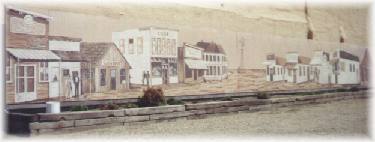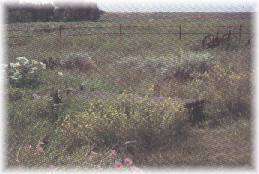
Wagon Bed Springs, sometimes called Lower Cimarron Springs, on the Cimarron River in Southwest Kansas afforded the first water during the dry season on the 60 mile stretch of the desert or Cimarron Cut-off Route of the Santa Fe Trail, after crossing and leaving the Arkansas River. It was the objective and stopping place of all travelers over the desert route of the Trail.
Wagon Bed Springs was and oasis on the route followed by most travelers to Santa Fe prior to the Mexican War. The Springs were located on the worst and most dangerous stretch of the journey to Santa Fe. Not only were the Springs a welcome sight to thirsty travelers, but they were the Springs a welcome sight to thirsty travelers, but they also served as a watering spot for immense herds of buffalo and prairie animals, as well as for Indians. Its water has been described as "cool, sweet, and good."
The Springs were a favorite haunt for raiding war parties of Comanches. It was near here that one of their parties in 1831 killed the famous explorer and mountain man, Jedediah Smith, who was taking a caravan to Santa Fe.
The significance of the Spring was recognized in 1961, when the National Park Service designated it a National Historic Landmark.

A wagon box set in seeping water gave the Springs its modern name. It was sunk into the ground to allow fresh, clear water to bubble up through the boards of the bottom of the wagon, while filtering out the sand and soil. It went dry as crop irrigation began, and memory of the exact location is uncertain, but traces of a spring at this replica most nearly match the 1825 description by U.S. surveyor Joseph Brown.
